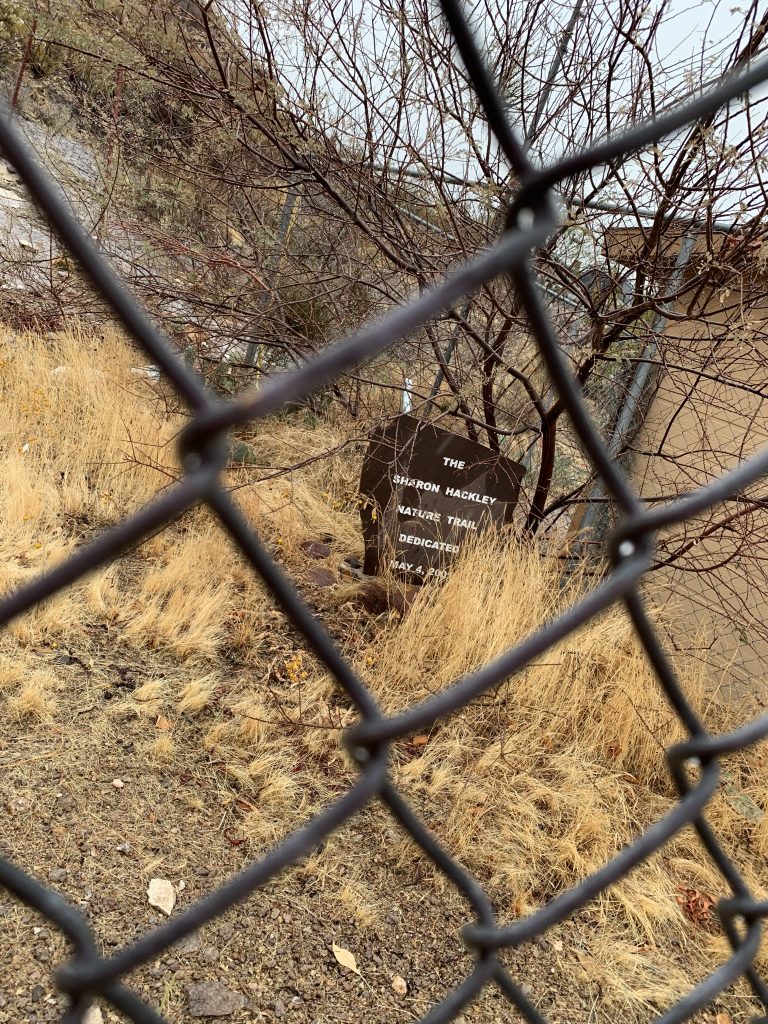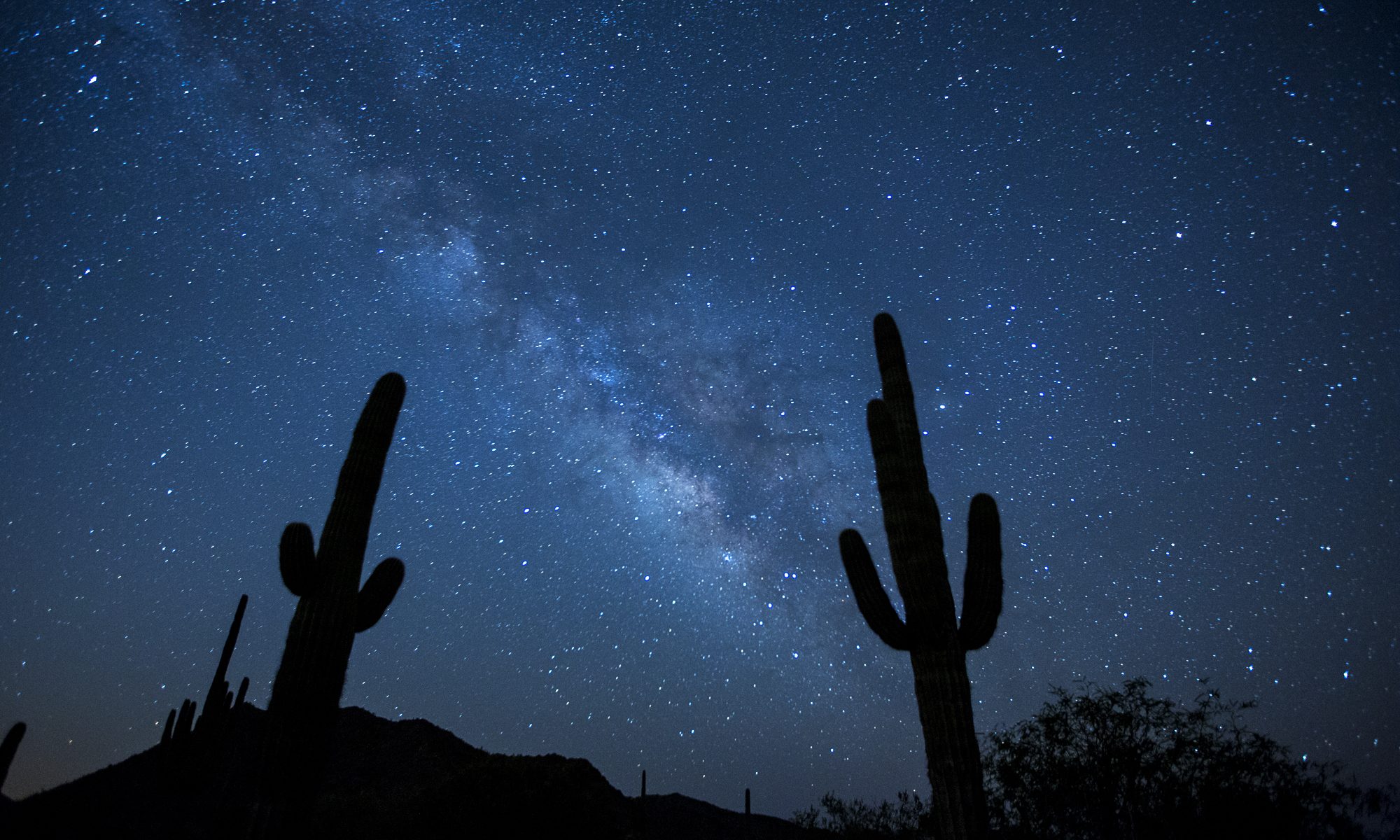It started with a brush covered hill, and ended with a nationally acclaimed science program.
Well, really, it started with the vision of an amazing science teacher named Sharon Hackley.
The Palo Christi Elementary School nature trail was the first of its kind in Arizona when it was finished in 1972, one year after Hackley started teaching at Palo.
The once-ignored wilderness on a hill behind the school blossomed into a sprawling nature trail. There were Native American and geology trails, and a pond. The plants and natural landmarks of the desert around the school were kept as part of the trail. A hedgehog cactus and a Palo Christi bush also made up some of the sites.

“Along the Primary, Nature, Indian and Geology Trails are all kinds of interesting things to see. Among other flora … are two types of prickly pear cactus, Burbank Spineless cactus, mistletoes, catclaw, mesquite, euphorbia, ambrosia, Golden Rye, bladder sage, tobacco, buckwheat, grizzly bear cactus, mallow, burr sage, ocotillo, pack rat’s nest, compass barrel and lightning rock, three types of cholla caucus, hedgehog cactus, wild cat, rainbow cave, wolfberry, Spanish dagger, Mormon tea, pencil and diamond cholla, beavertail cactus and Mohave Yucca.”
By 1978, it was estimated that 4,000 people had toured the trail. The outdoor planning committee — which consisted of students, teachers, and community members — had maps and plans for 46 projects, 20 of which were completed within five years.
“The next major projects include fencing the nature trail and the building of a nature trail,” wrote Jeff Morrissette.
Morrissette had been on location to tour the newly opened pond. The pond was a 3,000 gallon pond stocked with leopard frogs, a tiger salamander, waterdogs, six varieties of fish, crayfish, and several plants. It also served as a kind of oasis for thirsty desert animals.
But this nature trail wasn’t just a science program. Teachers used it for art and math, and even for a quiet reading period.
Morrissette said the guided walk through the nature trail took about 45 minutes. The trail guides were fifth and sixth grade students. In addition to those 45 minutes, the Native American trail took half an hour. The exhibit included a replica of Montezuma’s castle, which was built by students. There were native dwellings, murals, a carving in a wall.
This wasn’t a small project. It was a five-acre pocket of wilderness. The trail took up most of the northern and northeastern areas adjacent to the institution the desert begins.
Joshua trees and Saguaro spires decorated the hillside. A guide booklet talks about tumbleweeds, prickly-pear cacti, the cat-claw bush, creosote and agave plants.
“See that bush? That is where a rabbit could hide. Look across the wash at the cave. Did you know the rattlesnake has to have shade in the hot part of the day?”
It was a community learning experience with partners from the Soil Conservation Service and the Bureau of Land Management and the State Department of Agriculture.
And it wasn’t just flora, but fauna too. Chuckwallas sunbathed on the rocks, deer and antelope visited from the west, and the Arizona Game and Fish Department stocked the pond.
There was a Geology Kit section that included black light and fluorescent rock collections, a Geiger counter, a rock hammer and a variety of collecting implements in addition to a rock collection donated from the University of Arizona.
There were well-marked stops where children could study marigolds in flower pots, large sea shells, artificial flowers, yellow lizards, rubber turtles, a red dinosaur, colored feathers, yellow centipedes, a rubber snake, an artificial lady buy, a black plastic spider hanging from a web in a hole in a tall rock, an Irish potato, and the list kept going on.

“Take a Quiet Trip,” wrote journalist Dick Waters. “You’ll be glad you made the trip. But if you do go, walk softly and muffle your voice. A big buck or a bobcat or a mountain lion may be watching nearby amidst the boulders and greasewood.”
I’d be surprised if they would still watch. If they could be seen beyond the overgrown, washed out pathways. The only sounds coming from Palo Christi were steady rainfall and a hop and rustle of wings. A flurry of movement in a dead landscape. An owl, blinking slowly, unamused by our trespass.
The trail stands disused. Locked away behind an abandoned school. A rough idea of where the path might be winds into the hills. Vegetation obscures the sign that reads “The Sharon Hackley Nature Trail.” A legacy left to the wills of the desert.
And nature is slowly taking it back.

